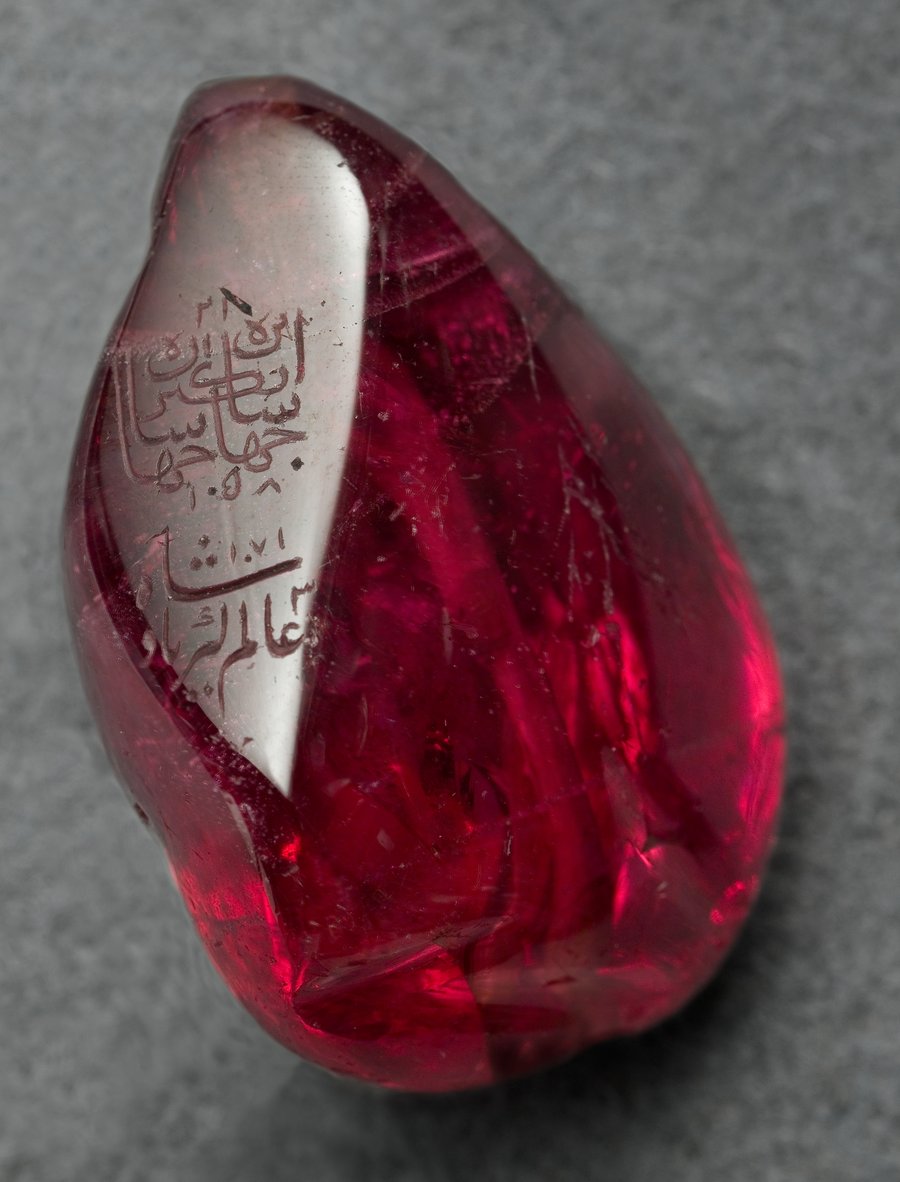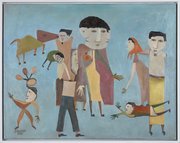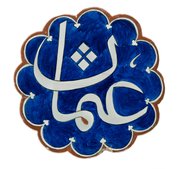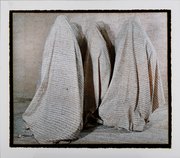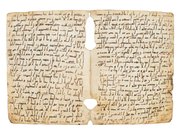
Inscribed Spinel
Museum of Islamic Art
- Title:
- Inscribed Spinel
- Patron:
- Shah Jahan
- Production place:
- India
- Date:
- 1628 - 1658
- Period:
- Mughal
- Title:
- Inscribed Spinel
- Patron:
- Shah Jahan
- Production place:
- India
- Date:
- 1628 - 1658
- Period:
- Mughal
- Material:
- Spinel
- Technique:
- Engraving, Polishing
- Dimensions:
- 1.6 × 3.5 × 3
This important spinel, or 'ruby' spinel, is drop-shaped and weighs 178.96 carats. It is inscribed "Shah Jahan bin Jahangir Shah 1058 AH (1648 CE) and Alamgir Padshah 1071 AH (1660-61 CE)". The habit of inscribing gems to personalise them dates back to the 8th century AH/14th century CE Timurid period. Its importance to the Mughal emperors, such as Jahangir (r. 1013-37 AH/1605-27 CE), is demonstrated through a passage written in his memoirs, the Tuzuk-i Jahangiri, as well as illustrated in courtly paintings of the period. The finest spinels came from Badakhshan (modern day Afghanistan) and were traditionally drilled through the centre to be strung onto necklaces, often combined with pearls and emeralds. This particular spinel is engraved with the name of Shah Jahan (r. 1037-68 AH/1628-1658 CE), formerly Prince Khurram, and was then subsequently engraved by his son, the Mughal Emperor Aurangzeb (r. 1068-1119 AH/1658-1707 CE).
